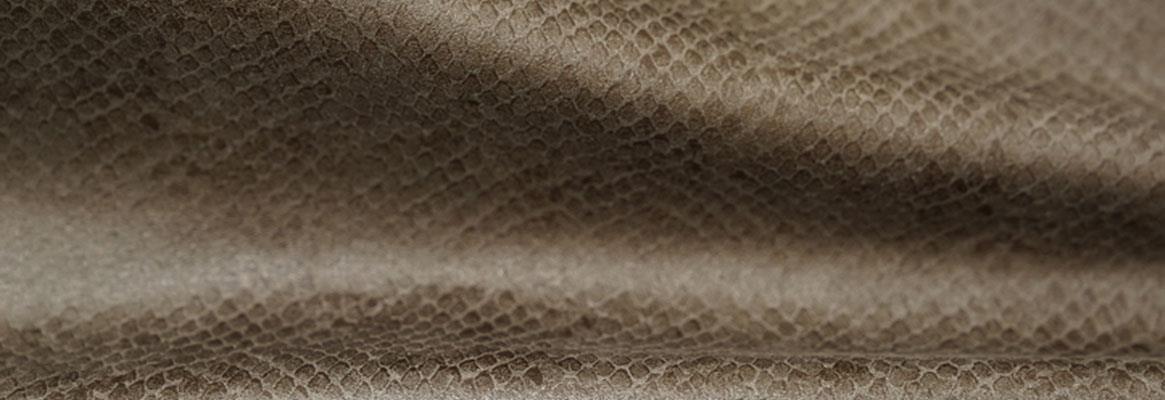How do leather, silk, and suede fabrics stand against their vegan alternatives?
It is the question fashion fans everywhere are asking: "Will vegan fabrics ever replace genuine suede, leather, and silk?" Thanks to current trends devoted to the eco-conscious, cruelty free, and budget savvy consumers, the movement to switch from animal product to vegan alternatives is already long on its way.
Suede
Suede is a luxury fabric made from the underside of sheep skin (or less commonly, the skin of goats, pigs, cows, or deer). As a type of leather, this skin lacks durability and demands constant upkeep to maintain its flexibility and color. Vegan alternatives not only save animal lives and allow for an eco-friendly option, but they also provide better defenses against water damage which genuine suede is highly susceptible to. Because vegan suede is made with polyester microfibers, faux suede is more easily maintained. With the look and feel of natural suede, vegan alternatives are stain resistant and easily cleaned thanks to their plastic materials. Some vegan suedes take sustainability a step further by using recycled materials. Fashion designer Lauren Battistini, who has her own line created entirely out of vegan fabrics, has commented on said materials known as eco-suede, saying it's "interesting because it melds the worlds of vegan fashion with sustainability and environmental concerns. This is made of polyester and plastic bottles."
Leather
When it comes to faux leathers and vegan leather alternatives PVC is a common though not the most flexible nor environmentally friendly option. Designer Lauren Battistini prefers polyurethane materials for they are more workable and malleable than traditional leather fabrics. Another favorite of Battistini's is Pinatex, a sustainable alternative made out of pineapple leaves (a natural byproduct of the pineapple industry). In contrast to traditional leather, faux leather and vegan leather alternatives are more durable. They are low maintenance whereas genuine leather requires conditioning and upkeep to keep the skins moist as well as to reduce fading. Alternatives are also significantly less expensive and tend to be easier to cut and sew making them the preferred option in the debate of genuine skins versus vegan alternatives. Lower price, lower maintenance, ease of usage, eco-friendly and cruelty free, vegan leather alternatives are propelled by an abundance of positive qualities that the genuine animal skin just cannot keep up with.
Silk
Genuine silk requires the endless efforts of silkworms, (whom are often boiled alive for the materials) and multitudes of tedious dying processes. The need for alternatives is obvious but the abundance of choices when it comes to vegan silk is not nearly as vast as other vegan fabrics. While not readily available to the mainstream consumer, Stella McCartney has produced two outfits with laboratory-created silk, inspired by the DNA of spiders and their webs. Bolt Threads' engineers have developed a protein similar to spiderwebs that is then injected into yeast and sugar and fermented to create a liquid silk that can be transformed into a fiber through a wet spinning process.
In terms of market ready options, one vegan silk alternative has been created out of cotton linter (which is usually found around the cotton seeds after being ginned and is discarded). Biodegradable, eco-conscious and now recognized for its silk like characteristics, this alternative now known as Cupro allows vegans with a silk alternative that is incredibly soft and durable. Though it falls like silk, Cupro can be cleaned with a standard washer and dryer whereas genuine silk requires much higher maintenance. Static-free, ethical, temperature adaptable, and again low maintenance, this alternative offers what genuine silk cannot.
With an abundance of positive aspects, vegan fabric alternatives prove to be stark competitors to their animal byproduct counter parts. Whether you are looking to save money, work with easier products or further help efforts to save our environment through use of sustainable resources, vegan alternatives offer advantages other fabrics just cannot compete with!
Be inspired by our faux fur and brushed fabrics and velour suedes collections with fabrics that can transform your next collection.
This article has been posted with permission from synzenbe.com








Comments